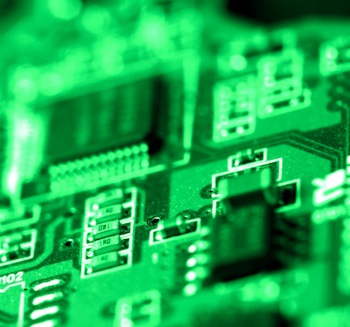Trash. It's everywhere, and more than likely there will be more next week. But what is in our trash? The infographic below takes a look at what makes up our trash. But it does bring to mind that old saying about trash and treasure.
Trash. It's everywhere, and more than likely there will be more next week. But what is in our trash? The infographic below takes a look at what makes up our trash. But it does bring to mind that old saying about trash and treasure.
Track your physical life with the Nike+ FuelBand. The device uses accelerometers to track your exertions, and relays them to your iPhone and the web through an available iPhone app. You can set up physical goals to keep yourself moving, or you can just track your physical activity to see how you are doing in your effort to keep healthy. You can also keep track of things using just the band's LEDs, but I have to believe the interconnected options makes this a lot more interesting.

Here's something that is sure to get map makers of the Red Sea fits – a brand new island. The Advanced Land Imager (ALI) aboard NASA's Earth Observing-1 satellite captured the birthday of the island as it was created from volcanic activity. The image was snagged on December 23, 2011.

The new island is in the Zubair Group off the coast of Yemen. Fishermen reported seeing lava fountains arching up to 90 feet in the air during the volcanic activity. No word yet on an official name for the new spot in the sun, but I hear it is the real hotspot for scientific tourism (pun intended).
via physorg
Red Sea Rift
The Red Sea Rift is a spreading center between two tectonic plates, the African Plate and the Arabian Plate. It extends down the length of the Red Sea, stretching from the southern end of the Dead Sea Transform to a triple junction with the Aden Ridge and the East African Rift (the Afar Triple Junction) in the Afar Depression of eastern Africa.
source:wikipedia
 Don't you hate it when your cellphone conks out after one two many drops? Or did that laptop land on the desk just a little too hard? How about that flat screen that fell off its mount, wouldn't it be great if it could fix itself? If researchers at University of Illinois have their way with it, this could happen.
Don't you hate it when your cellphone conks out after one two many drops? Or did that laptop land on the desk just a little too hard? How about that flat screen that fell off its mount, wouldn't it be great if it could fix itself? If researchers at University of Illinois have their way with it, this could happen.
The team are developing a system that incorporates a series of capsules located along a circuit. Each capsule is filled with liquid metal that releases when the circuit is broken, restoring connectivity. According to U of I chemistry professor Jeffrey Moore,
Rather than having to build in redundancies or to build in a sensory diagnostics system, this material is designed to take care of the problem itself.
The new system has shown the capacity to repair circuits in a fraction of a second, and allows repairs to be made in places that would be impossible otherwise. As team co-lead Professor Nancy Sottos explains,
In general there’s not much avenue for manual repair [in electronic devices with broken circuits]. Sometimes you just can’t get to the inside. In a multilayer integrated circuit, there’s no opening it up. Normally you just replace the whole chip. It’s true for a battery too. You can’t pull a battery apart and try to find the source of the failure.
So far the project has yielded very favorable results, and such technology could be adapted to a variety of electronic components. Who knows, maybe in the future we can have a cell phone that could stand up to the average user. Now that would be nice.
via Time
History of Circuit Boards
Development of the methods used in modern printed circuit boards started early in the 20th century. In 1903, a German inventor, Albert Hanson, described flat foil conductors laminated to an insulating board, in multiple layers. Thomas Edison experimented with chemical methods of plating conductors onto linen paper in 1904. Arthur Berry in 1913 patented a print-and-etch method in Britain, and in the United States Max Schoop obtained a patent to flame-spray metal onto a board through a patterned mask. Charles Durcase in 1927 patented a method of electroplating circuit patterns.
source:wikipedia